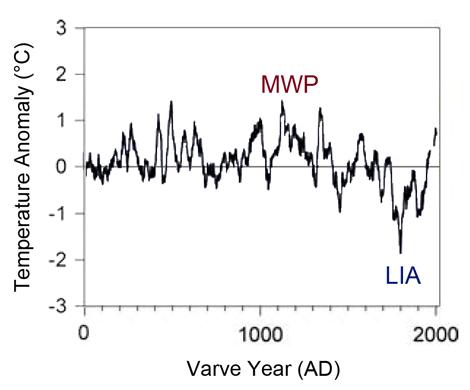Reference
Cook, T.L., Bradley, R.S., Stoner, J.S. and Francus, P. 2009. Five thousand years of sediment transfer in a high arctic watershed recorded in annually laminated sediments from Lower Murray Lake, Ellesmere Island, Nunavut, Canada. Journal of Paleolimnology 41: 77-94.
Description
Working with sediment cores extracted from Lower Murray Lake, Ellesmere Island, Nunavut, Canada (81°21'N, 69°32'W) in 2005 and 2006, the authors calculated annual mass accumulation rate (MAR) for the past five millennia, which they used to derive a relationship between MAR and July temperature at the two nearest permanent weather stations over the period of instrumental measurements. This work revealed there were several periods over the past 5000 years when the temperature of the region exceeded the peak temperature of the 20th century, the most recent of which was during the Medieval Warm Period, which we have delineated on the following figure as occurring between about AD 930 and 1400, and where the peak temperature of that period can be seen to have been about 0.6°C higher than the peak temperature of the Current Warm Period.

Reconstructed Lower Murray Lake temperature anomaly relative to the AD 1001-2000 mean. Adapted from Cook et al. (2009).




